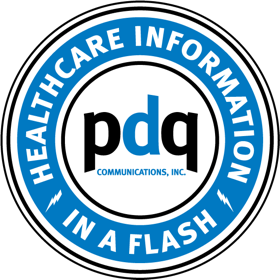Launching a new pharmaceutical product presents unique challenges far beyond traditional marketing...
Effective healthcare marketing begins with precision targeting. While many pharmaceutical companies focus first on tactics and channels, the most successful campaigns start with a clear strategy for identifying and engaging the right healthcare professionals.
By understanding which HCPs will benefit most from your solutions, you can create more relevant messaging, select appropriate channels, and ultimately drive better results from your marketing investments.
Key Takeaways
- Start With Smart Targeting: Don’t lead with tactics. Begin by identifying the HCPs who are most likely to benefit from your solution—it’s the foundation of campaign effectiveness.
- Define Your Value Clearly: A precise value proposition—what you solve, who it’s for, and why it’s better—helps focus your targeting and makes your outreach more relevant.
- Let Data Drive Segmentation: Use real-world data such as prescribing behavior, patient demographics, and practice characteristics to identify and prioritize your highest-potential HCPs.
- Tailor Channels and Messaging: Customize both your message and channel mix based on each segment’s preferences and clinical context to boost engagement.
- Partner With PDQ for Precision: PDQ Communications combines deep healthcare expertise with advanced targeting capabilities to help you reach and engage the right HCPs with confidence.
Healthcare professionals receive hundreds of marketing communications weekly across multiple channels. With limited time and attention, most of these messages go unnoticed or ignored. In this competitive environment, reaching the right audience isn't just preferable—it's essential for campaign success.
Strategic audience targeting provides several key advantages:
- Higher engagement rates when your message reaches providers who find it relevant
- Improved ROI by focusing resources on the highest-potential segments
- More meaningful relationships with providers who genuinely benefit from your solutions
- Better patient outcomes by connecting solutions with the HCPs who need them most
The difference between an effective campaign and a mediocre one often comes down to audience selection. Investing time upfront to identify the right targets creates a foundation for meaningful results that tactics alone cannot achieve.
Clarify Your Value Proposition
Before effectively targeting healthcare professionals, it’s essential to articulate precisely what problem your product solves, who it's designed to help, and what makes it superior to alternatives.
This clarity becomes the compass that guides all targeting decisions.
Define the Problem Your Product Solves
Start by identifying the specific clinical challenge or workflow issue that your solution addresses. Is it improving patient outcomes or diagnostic accuracy? Reducing treatment complications? Increasing treatment adherence? The more precisely you can define the problem, the more accurately you can target HCPs who face that challenge.
Know Who It's For
Determine the specific patient populations that benefit from your solution. Consider factors such as:
- Disease states or conditions
- Age demographics
- Comorbidities
- Treatment history
- Insurance coverage
This patient-centric approach enables you to identify the healthcare professionals who regularly treat these particular populations.
Understand Your Differentiators
Clearly articulate what makes your solution different or better than alternatives. Whether it's improved efficacy, reduced side effects, cost-effectiveness, or convenience, these differentiators help identify which HCP segments will find your solution most valuable.
With this foundation in place, you can shift from broad marketing efforts to precision targeting, helping ensure your solution reaches the providers who can benefit most.
Use Data to Segment the Market
Data-driven segmentation elevates targeting from guesswork to strategic precision. By leveraging analytics and real-world data (RWD), you can identify high-value HCPs and institutions with remarkable accuracy.
Leverage Real-World Data
Today's healthcare marketers have access to unprecedented data resources, including:
- Prescribing patterns and volume
- Patient population characteristics
- Practice size and structure
- Referral networks
- Insurance and formulary affiliations
- Digital engagement behaviors
According to marketing analytics expert Gary Denik:
"Real-world data (RWD) from patients can help [firms] optimize their marketing budgets by reshaping campaign messaging and targeting more effectively, all while helping increase patient outcomes in the process."
RWD creates a multidimensional view of the healthcare landscape, enabling sophisticated segmentation beyond basic specialty or location targeting.
Identify High-Value HCPs and Institutions
Using this data, identify providers who:
- Regularly treat your target patient population
- Demonstrate practice patterns aligned with your solution
- Show receptivity to new treatment approaches
- Operate in settings where your solution provides maximum benefit
- Have formulary access that supports your product
This approach focuses your marketing efforts on providers with both the highest need for your solution and the greatest ability to implement it.
Prioritize the Right Targets
With your segments identified, the next step is prioritization. Not all potential targets warrant the same level of investment or approach.
Strategic Targeting Approaches
Effective prioritization often combines multiple segmentation variables such as:
- Specialty and Subspecialty: Specialists who frequently encounter your target condition
- Geographic Location: Regions with a high prevalence of relevant conditions
- Patient Volume: Providers with higher volumes of relevant patients
- Prescribing Behavior: Early adopters or those with prescribing patterns indicating openness to your solution
- Payor Relationships: Providers whose patients have favorable coverage for your solution
Each of these dimensions一and many others一can add another layer of precision to your targeting approach, helping to identify the providers most likely to adopt and benefit from your solution.
Develop Tiered Engagement Models
Based on prioritization, develop tiered engagement models that allocate resources according to potential value:
- Tier 1: High-touch, personalized engagement for highest-value prospects
- Tier 2: Moderate engagement through targeted campaigns
- Tier 3: Broader messaging and digital approaches
This approach can help ensure efficient resource allocation while maintaining appropriate engagement across your target audience.
Align Messaging and Channels
Once you've identified and prioritized your target segments, align your messaging and channel selection with their specific needs and preferences.
Tailor Your Message
Different HCP segments have distinct priorities, challenges, and information needs. Customize your messaging to address these specific concerns:
- For specialists, emphasize clinical outcomes and specialized applications
- For primary care, focus on integration with existing treatment protocols
- For academic medical centers, highlight research and evidence
- For community practices, emphasize practical implementation and patient benefits
This tailored approach demonstrates your understanding of each segment's unique context and increases message relevance.
Select the Right Channel Mix
Different HCP segments also have distinct channel preferences. Develop a channel strategy that meets your audience where they are:
- Digital Channels: Email, social media, targeted digital advertising
- In-Person Engagement: Representative visits, conferences, peer education events
- Print Materials: Direct mail for segments showing high response to physical media
- Professional Platforms: Targeted messaging on HCP-specific platforms
While a 2024 report from data provider HealthLink Dimensions found that 78% of healthcare providers prefer email for clinical information and professional updates—underscoring its value in your communication mix—research also shows that integrated multi-channel strategies consistently outperform single-channel efforts.
To maximize impact, develop a coordinated plan that reinforces your message across complementary channels.
Putting It All Together
Effective healthcare audience targeting is both an art and a science. It requires clear strategic thinking, robust data analysis, and continuous refinement based on campaign performance.
By starting with a clear value proposition, using data to identify and prioritize high-potential segments, and aligning your messaging and channels accordingly, you create a foundation for marketing success that tactical execution alone cannot achieve.
Indeed, targeting is not a one-time exercise but an iterative process of refinement. As you gather campaign data and market conditions evolve, continually reassess and optimize your targeting approach to maintain maximum effectiveness.
The most successful healthcare marketers recognize that reaching the right audience isn't just about efficiency—it's about creating meaningful connections that ultimately improve patient care by ensuring valuable solutions reach the healthcare professionals who need them most.
PDQ Communications: Your Partner for Targeting Excellence
At PDQ Communications, we specialize in precision healthcare audience targeting that drives measurable results for clients. Our approach combines deep industry expertise with advanced data capabilities to connect you with the right HCPs.
Our expert capabilities include:
- Advanced segmentation based on prescribing patterns, patient populations, and practice characteristics
- Comprehensive specialty coverage across hundreds of healthcare specialties and subspecialties
- Geographic precision to focus resources on your highest-potential territories
- Payor and plan-based targeting to identify HCPs with preferred formulary tiers for your products
We maintain extensive databases, including one of the industry's largest opt-in HCP email lists, with access to more than 1,300 health plans. Our targeted approach delivers exceptional results—with 99% email deliverability rates and guaranteed open rates on our HCP lists.
We take a consultative approach, working to develop targeting strategies tailored to your specific objectives and helping identify the highest-value HCP segments through our data-driven methodology.








